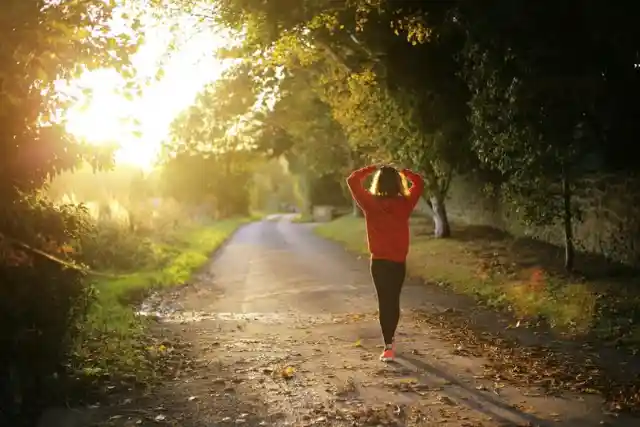Mindful Walking 101: How To Meditate While Walking
By
jagriti /
Oct 13, 2023
Walking is something that many of us do when a car trip is not possible or practicable. It might even be regarded as a chore. Nonetheless, the act of walking upright distinguishes us from the majority of the animals on our planet. It is, in a literal sense, a part of who we are. Walking is so common that we often neglect to notice it. But it's there, and we may all have it as long as our health allows. But what if we say that this automated mindless act of moving can be transformed into something more. This is where mindful walking or meditation walking comes into play. Let’s take a closer look at it.
What is mindful walking?
Walking meditation, also known as kinhin or mindful walking, is a form of Buddhist movement meditation. It is a straightforward method of mindfulness that is simple to adopt into your daily practice. Walking meditation, as the name implies, allows you to focus on the physical experience of walking. You maintain your vision while focusing on the sensation of walking. In contrast to other kinds of mindfulness and meditation that focus on the breath, mindful walking meditation encourages you to breathe naturally. Your body will experience feelings when you're moving rather than sitting, such as your feet repeatedly touching the ground and your arms softly swinging back and forth. This is true if you're paying attention.
Benefits of walking meditation
Promotes mind-body connection As you walk, you pay attention to all of your body's physical sensations, acting as if you were doing a moving body scan to assess your physical well-being. Take notice of how your feet feel as they make contact with the ground, how your arms feel as they swing with each stride, or how your posture aligns as you move slowly. Anxiety relief Walking meditation has been proved by researchers to reduce anxiety. Walking meditation is beneficial because it gets you out of the anxious states of mind and body, lets you let out pent-up energy, and uses your entire body to focus your attention on the present now rather than on your uneasiness. In a different study, walking before or after meditation helped young adults feel less anxious. Increased concentration Your capacity to focus may be negatively impacted by the internet and our fast-paced environment. According to research, mindful movement techniques like yoga, tai chi, and walking meditation may have a significant positive impact on attention span. Boosts the quality of sleep Meditation can help you have better sleep. Sleeplessness can be caused by stress, anxiety, and depression, all of which are reduced with meditation. Regular meditation can lower blood pressure, lower heart rate, and produce more melatonin, a hormone that promotes sleep. Support for depression Anxiety and stress are two important contributors to depression, and walking meditation can change how you respond to ideas and emotions. Depression is characterized, among other things, by negative self- or experience-talk. A meditation technique called mindful walking teaches you to become conscious of these ideas and to let them go without holding onto them.
How to practice mindful walking?
Pick a location
Practice mindful walking in a secure area with enough space to move freely. While the environment need not be absolutely silent, it should be devoid of most distractions. Starting up
You should anchor yourself at the start of each session. As you focus entirely on your body, take a moment to breathe deeply. Feel how solid the ground is under your feet. Be conscious of all the various bodily feelings. Record your feelings and thoughts as well. Start moving slowly now. Instead of concentrating on your breathing during walking meditation, pay attention to how your feet and legs move as well as how your body moves forward. Keeping your focus as you walk
Take note of your emotions, thoughts, and moods as well as the many bodily sensations that arise as you walk. Simply take note of these mental occurrences as they happen and return to the practice of walking. There is no need to compile a list, analyze, accept, or reject anything. When you walk, try not to be stiff or mechanical. Go with the flow, just stroll freely, with goodwill and an open heart. Maintain posture and speed
Walking meditation can be done at any speed, from very slow to exceedingly slow. You can clasp your hands and arms in front of your body at the height of your diaphragm or navel, hold them behind your back, or let them swing freely by your sides. As you walk, your leg muscles should be loose, and your gait should feel comfortable and natural. Maintain an upright, balanced, and elegant gait when you walk. Watch your thoughts when they take over
Thoughts have that much power. So, when you discover that your thoughts are distracting you, simply acknowledge the situation, smile, and then choose to gently and compassionately turn your focus back to your felt senses—and, in particular, to the sensation of your feet moving. Repeat this sensory and physical sensation throughout the duration of your stroll.

